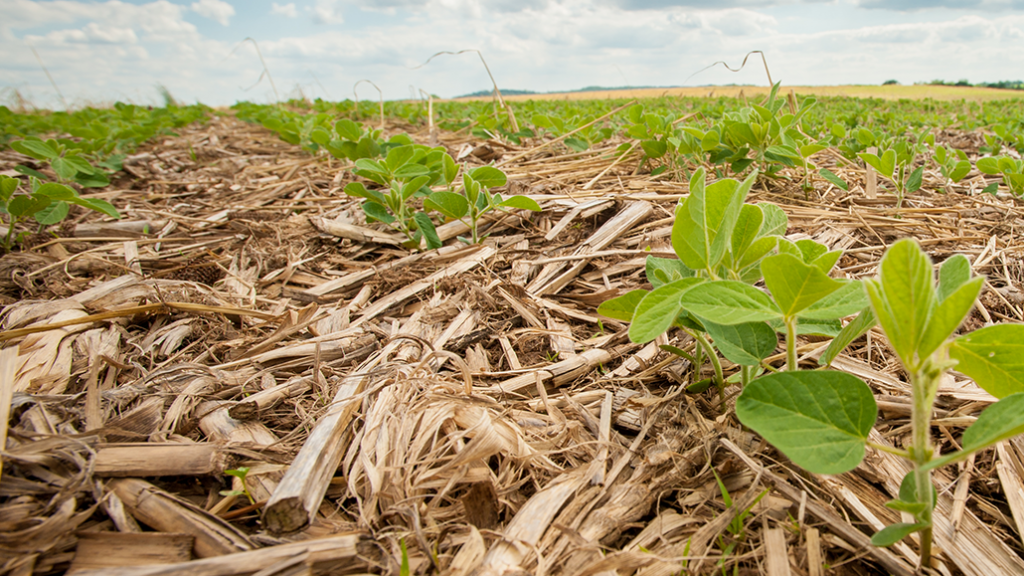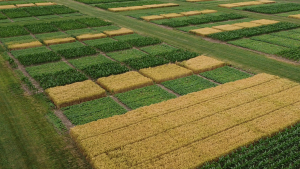The cover crop difference
RESEARCHING THE BENEFITS

WE KNOW THE benefits of planting cover crops, but what exactly are those benefits and how are they measured? Results of a five-year Ontario-based cover crop research project are rolling in and are presenting some definitive information about how cover crops relate to crop productivity and nitrogen availability, carbon inputs and carbon sequestration and the overall economics of planting cover crops.
“We’re trying to understand what’s actually happening in the soil as a result of growing a cover crop,” says Dr. Inderjot Chahal, project lead and a post-doc research fellow with the School of Environmental Sciences at the University of Guelph, Ridgetown Campus. “If we can provide information that growers can relate to, maybe we can increase the adoption and acreage of cover crops across Ontario.”
Despite substantial research across Canada and the U.S., there is room to improve cover crop adoption by farmers. According to data released by the Ontario Ministry of Agriculture, Food and Rural Affairs (OMAFRA) in 2020, roughly 30 per cent of farmers in southwestern Ontario regularly grow cover crops.
Previous research suggests cover crops are a positive influence on soil and crop attributes, including increasing soil organic matter and aggregate stability and decreasing soil erosion and nutrient losses (including nitrogen). The question Chahal and her team are looking to answer is just how they provide these benefits to soil health and crop yield.
“Continued studies at the same site have demonstrated that cover crops increased soil microbial activity, crop yield and nitrogen availability to the next crop in the rotation,” says Chahal. “Using this knowledge, we conducted this research to answer questions related to cover crop-induced effects on soil, and potentially understand the associated mechanism, or how they achieve these benefits.”
ANALYSIS
The research built off of previous cover crop projects conducted at the Ridgetown Campus, including cover crop and crop yield data from as far back as 2007. Two long-term trials were conducted, planting four species of cover crops over the project timeline — oats, cereal rye, oilseed radish, and a mix of cereal rye and oilseed radish. All cover crops were planted in late summer or fall, depending on the crop rotation, where they were given a chance to grow and mature. Soil and crop samples were collected each fall before frost and twice in the following spring for evaluation.
“So far, we have found cover crop species had 11 — 22 per cent greater soil organic carbon storage when compared to the no cover crop control,” says Chahal. “Relative to no cover crop control, cover crops increased soil health parameters including active carbon, wet aggregate stability, microbial biomass carbon and nitrogen. And overall crop yield with cover crops was either equal to or greater than the no cover crop control.”
To measure for carbon input and carbon sequestration, soil samples were taken at depths between zero to 15 centimetres and analyzed for total carbon. Soil inorganic carbon was measured, and soil organic carbon was calculated by subtracting inorganic carbon from total carbon.
To assess economic returns from cover crops, the project calculated profit margins (differences between revenues and costs associated with cover crops) and profit margin ratios for each crop grown in the rotation. Ratios were used to indicate any differences (none, an increase, or loss) in profit margins as a result of the cover crop. Results from the 2021 trial saw the first positive grain corn yield response to cover cropping. The corn trial was grown after a radish cover crop and the 60 bu/ac increase in dry grain corn yield was compared to no cover crop and oat cover crop controls. The trial fields are part of a long-term experiment at Ridgetown Campus where annual cover crops were planted 10 times over the 13 years since 2007.
Crop productivity and nitrogen dynamics were evaluated using biomass samples taken from the cover crops in fall and spring. Soil mineral nitrogen content was also quantified. The results of 2019 and 2020 trials showed all cover crop treatments had statistically or numerically greater yields than the no cover treatment. This was also consistent with previous research.
“The positive effects of long-term cover cropping were attributed to better soil health and greater soil organic matter. With greater soil organic matter, it’s expected plants will have more available nitrogen and water in a dry growing season,” explains Chahal.
Additional benefits were observed in crop responses to stress when, in 2020, which was dry until mid-July, trial grain corn yield was up to 59 bu/ac greater with long-term cover cropping (10 times in 13 years) than the no cover crop control. This research demonstrates the resiliency to weather stress with the improved soil health generated by cover crops.
RESEARCH APPLICATION
The results of the study confirmed the positive influences of cover crops on soil health and crop yield. The research was able to measure and quantify the benefits cover crops provide, including increased nitrogen, carbon storage and economic payoffs.
“The trial is well designed and has demonstrated that cover crop-induced improvements in soil health can occur in the medium-term (planting cover crops six times in eight years),” says Chahal, who reminds farmers that the research is showing long-term benefits of cover crops are proving to pay off faster than they may think. “The adoption of cover crops does pay off, and we’re working hard to find relatable information to increase more acres.”
Ontario farmers can directly benefit from the availability of research results like this study that demonstrates and quantifies the benefits of cover crops on yield, soil health and economics. Chahal says the next step is to determine just how cover crops are able to achieve these benefits, exploring just what happens in the soil to improve or retain nitrogen, soil health and crop yield. These questions will be part of future study, building on the results of this project in an effort to provide relatable results and information to Ontario growers, and ultimately increase the adoption of cover crops.
Dr. Laura Van Eerd is the principal research lead on this project.
This project is funded by the Canadian Agricultural Partnership, a five-year investment by Canada’s federal, provincial and territorial governments. •

























